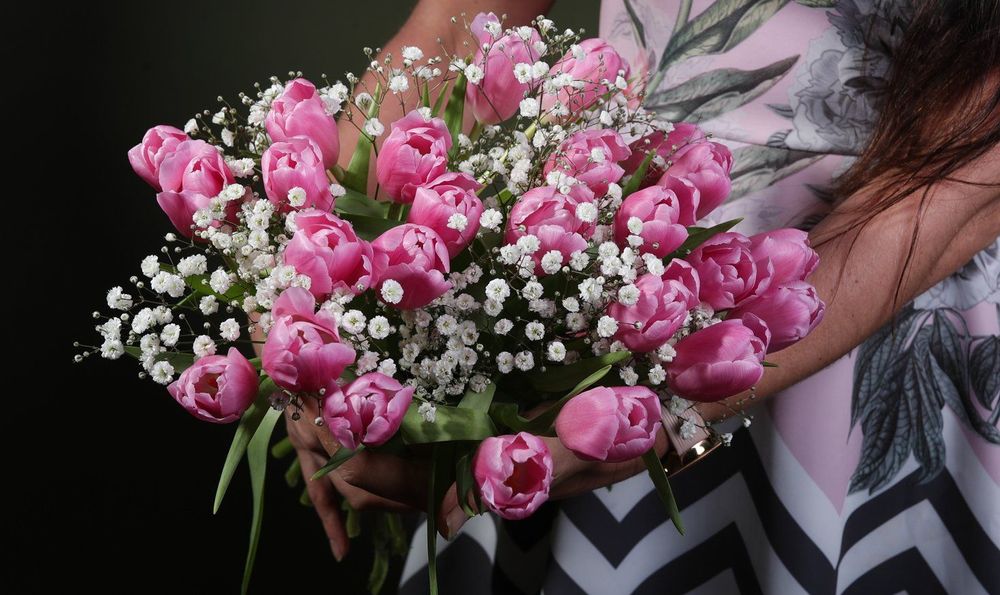The History of Mother’s Day

As we near the day in the calendar set aside for appreciating everything our mums do for us, it got us wondering: when did we start celebrating Mother’s Day? We looked into it and discovered, to our surprise, that the UK and US Mother’s Day traditions have completely different origins - but flowers are a key component of both!
Mothering Sunday in the UK
Mother’s Day in the UK has its origins in the 16th century custom of ‘Mothering Sunday’, which fell on the fourth Sunday of Lent. That’s three Sundays before Easter, and the tie-in with the church calendar is why it’s always a bit confusing trying to work out when it is each year. The tradition was that you paid your ‘mother church’ a visit - either the church where you were christened, or your parish church, or the nearest cathedral - and you were said to be ‘going a-mothering’ when you did so.
On this day, which came to be known as Mothering Sunday, servants were given the day off to go back to the parish they were born, with children and other family members also joining in. Because this occasion was a rare opportunity for a family get-together, the focus of the day gradually shifted to visiting not just the mother church, but one’s own mother.
On the way to the church, people gathered wildflowers to leave in the church and to present to their mothers. And, although the day fell during Lent, the austerity was relaxed for Mothering Sunday and people treated their mothers to edible gifts such as Simnel cake, ‘mothering buns’ or fig pie.
Mother’s Day in the USA
As you probably already know, Mother’s Day falls on a different day in the USA. But why? Well, the name ‘Mother’s Day’ has its origins across the pond, and although we mainly use this name for Mothering Sunday here in the UK these days, it’s actually a completely different event from a historical point of view.
It was first celebrated in 1908 thanks to the efforts of a woman named Anna Jarvis, whose mother, Ann, had nursed soldiers in the American Civil War and founded ‘Mother’s Day Work Clubs’ to help tackle public health. Eager to continue her mother’s work, Anna was successful in getting a day dedicated to honouring mothers nationwide. She believed that a mother is:
“the person who has done more for you than anyone in the world”
Mother’s Day became a national holiday in 1914 thanks to President Woodrow Wilson, and to this day it’s celebrated on the second Sunday in May. In case you were wondering where to put the apostrophe in ‘Mother’s Day’ when you’re writing your card, Anna Jarvis was keen to stipulate its position, saying that it should be “singular possessive, for each family to honor its own mother, not a plural possessive commemorating all mothers in the world.” So, apostrophe before the S, not after it.
It was US troops who brought the American idea of ‘Mother’s Day’ over here during the Second World War, and its influence gradually morphed with the UK’s traditional ‘Mothering Sunday’ festival. But we’ve retained the church-related date, while the US still marks the occasion on the day Anna Jarvis set aside in May.
Treat your mum to flowers this Mother’s Day
Flowers have long been associated with days honouring mothers, right from their earliest origins in the wildflowers gathered en route to one’s mother church. We reckon our Lovely Mum bouquet, with its gorgeous cottage garden flowers, is a nice nod to the tradition of spontaneously picking flowers.
Interestingly, by the 1920s, Mother’s Day in America had come to be associated with a particular flower, the carnation - a bloom you’ll see in two different colours in our sumptuous Mother’s Love bouquet. The carnation is still a big deal on Mother’s Day in many countries, with pink being the most popular colour, as it symbolises the undying love of a mother.
Mother’s Day in the UK falls on 22 March this year, so it’s also a time when we’re all going to be full of the joys of spring. With that in mind, a bouquet of cheerful tulips is a wonderful way to put a smile on your mum’s face. Or, if she’s someone who likes to do things differently, how about taking her by surprise with our quirky Amazing Acacia bouquet?
Browse our full range of Mother’s Day flowers and find the perfect arrangement of flowers to show your mum how much you care this Mother’s Day.